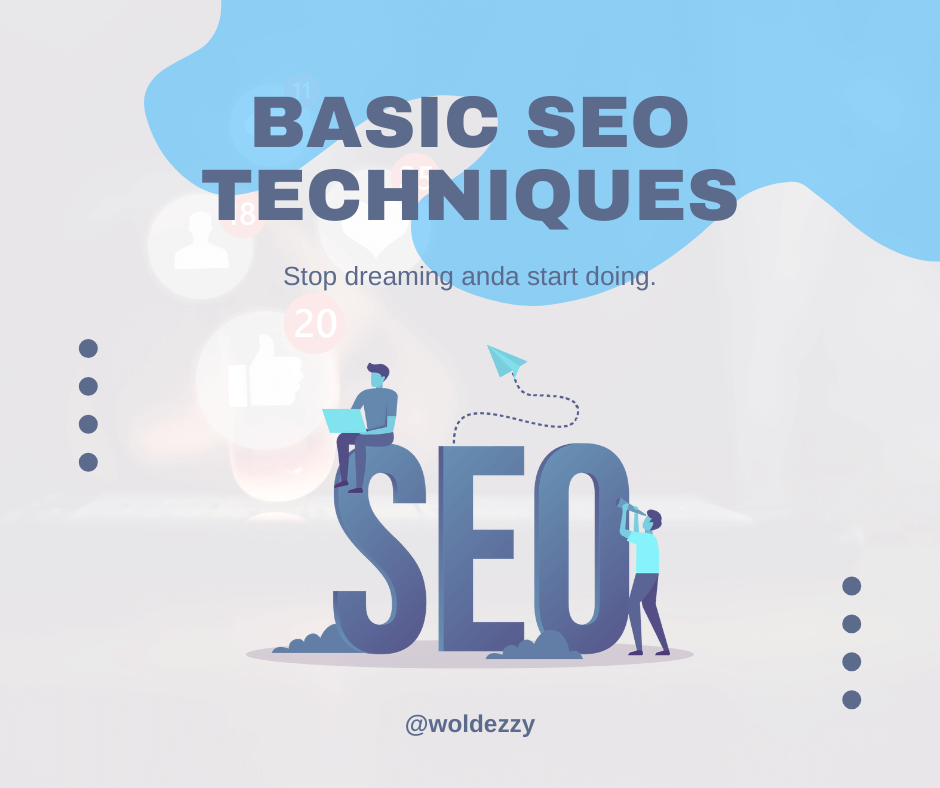Search Engine Optimization (SEO) can seem daunting, but it’s essential for improving your website’s visibility on search engines like Google. Whether you’re a small business owner, a blogger, or a marketer, mastering some basic SEO techniques can make a big difference. Let’s break down these techniques in a simple, conversational way, with practical examples and case studies to help you understand how to apply them.

1. Keyword Research
Why It Matters: Keywords are the terms people type into search engines. Knowing which keywords are relevant to your audience helps you create content that ranks well.
How to Do It: Use tools like Google Keyword Planner, Ubersuggest, or Ahrefs to find keywords related to your business. Look for keywords with high search volume but moderate competition.
Example: If you run a bakery, you might find that “best chocolate cake recipe” is a popular search term. Creating a blog post around this keyword can attract people looking for baking tips.
2. On-Page SEO
Why It Matters: On-page SEO involves optimizing individual pages to rank higher and earn more relevant traffic.
How to Do It:
- Title Tags: Ensure your title is catchy and includes your primary keyword.
- Meta Descriptions: Write concise descriptions that include your keyword and encourage clicks.
- Headers: Use headers (H1, H2, H3) to structure your content and include keywords naturally.
Example: A blog post titled “10 Tips for Baking the Perfect Chocolate Cake” with headers like “Ingredients for Chocolate Cake” and “Step-by-Step Baking Instructions” will be more readable and SEO-friendly.
3. Quality Content
Why It Matters: Content is king in SEO. High-quality, relevant content keeps visitors on your site longer and encourages them to return.
How to Do It: Focus on creating content that answers questions, provides value, and engages your audience. Use a mix of text, images, videos, and infographics.
Case Study: Neil Patel’s blog is a great example. By consistently publishing in-depth, valuable content on digital marketing, he attracts millions of visitors and ranks highly for numerous keywords.
4. Mobile Optimization
Why It Matters: More people are using mobile devices to search the web. Google also uses mobile-first indexing, meaning it primarily uses the mobile version of content for ranking.
How to Do It: Ensure your website is responsive (adjusts to different screen sizes) and has fast load times. Use tools like Google’s Mobile-Friendly Test to check your site.
Example: Websites like BuzzFeed have mastered mobile optimization, providing a seamless browsing experience regardless of device, which helps them maintain high engagement rates.

5. Link Building
Why It Matters: Backlinks (links from other websites to yours) signal to search engines that your content is valuable and trustworthy.
How to Do It: Reach out to other websites for guest blogging opportunities, create shareable content, and engage in industry forums.
Case Study: Brian Dean of Backlinko used a strategy called the “Skyscraper Technique,” where he created comprehensive content, then reached out to sites that had linked to similar content. This helped him earn high-quality backlinks and improve his site’s ranking.
6. Technical SEO
Why It Matters: Technical SEO involves optimizing your website’s backend to help search engines crawl and index your site more effectively.
How to Do It: Ensure your site has a clean URL structure, create an XML sitemap, use HTTPS for security, and fix broken links.
Example: Moz is renowned for its comprehensive approach to technical SEO, offering resources and tools that help ensure websites are technically sound and search engine-friendly.
7. User Experience (UX)
Why It Matters: A positive user experience leads to higher engagement and lower bounce rates, which can improve your rankings.
How to Do It: Focus on website design, navigation, and overall usability. Make sure your site is easy to navigate and that content is accessible.
Example: Apple’s website is an example of excellent UX design. It’s clean, easy to navigate, and provides a seamless experience across all devices, contributing to high customer satisfaction and strong SEO performance.
Conclusion
Mastering basic SEO techniques is about understanding your audience, optimizing your content, and ensuring your website provides a great user experience. By implementing these strategies, you can improve your search engine rankings and drive more organic traffic to your site.
Ready to boost your SEO? Start with these basics, and you’ll be on your way to creating a more visible and engaging online presence. If you have any questions or need further assistance, feel free to reach out!


Leave a Reply